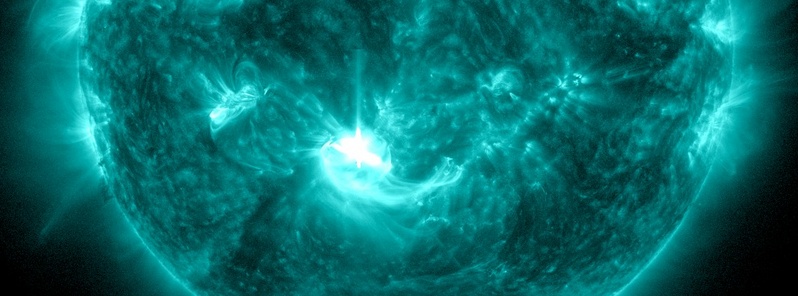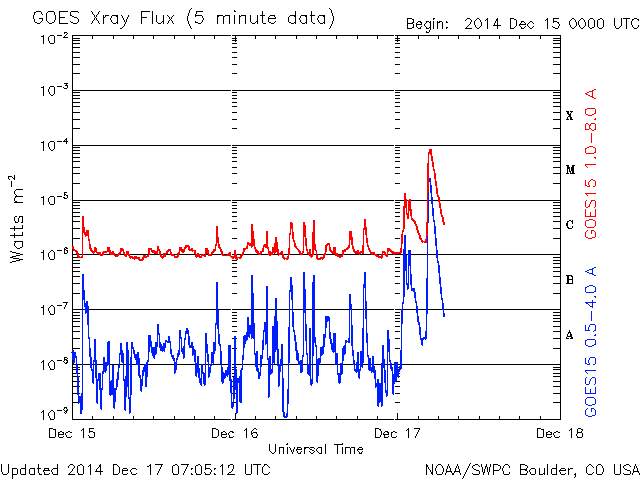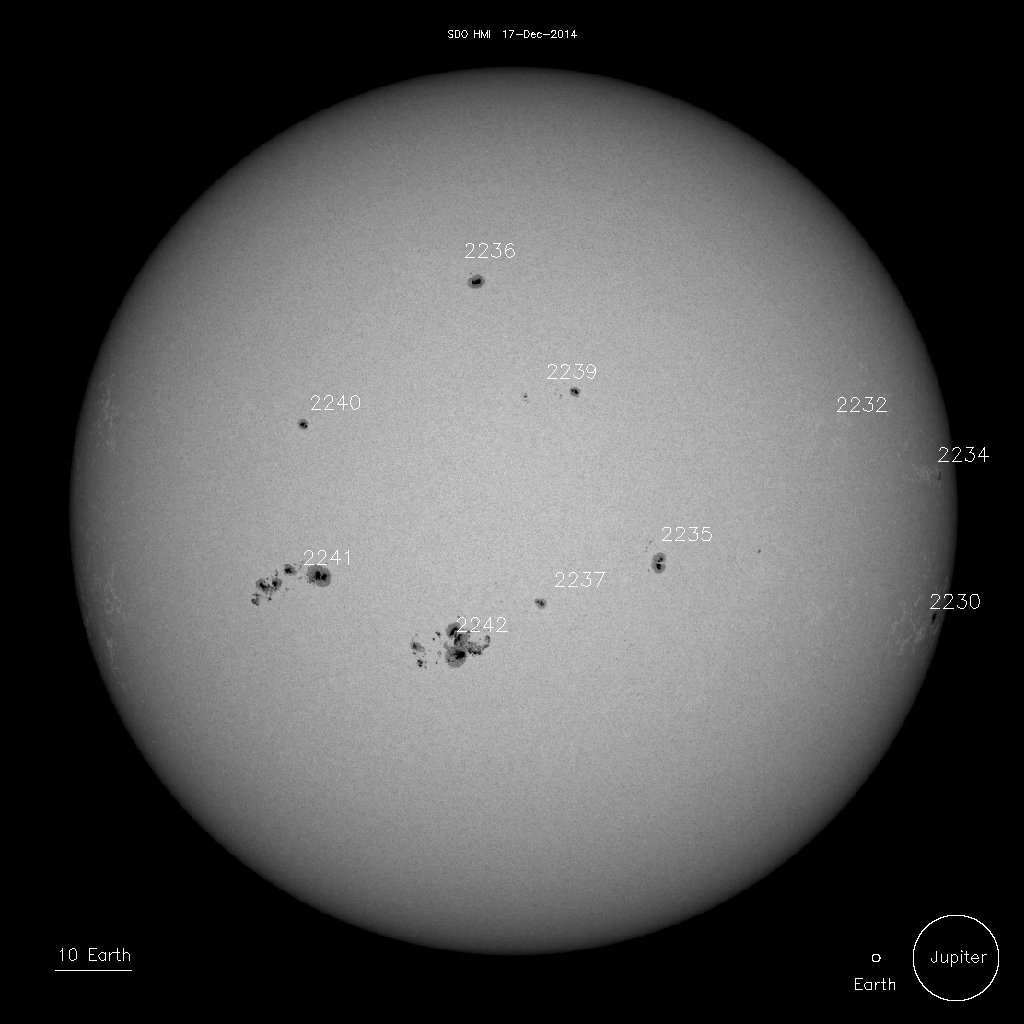Strong, long duration solar flare measuring M8.7 erupted from geoeffective region

A very strong solar flare measuring M8.7 at its peak time (R2 – Moderate Radio blackout) erupted from geoeffective Active Region 2242 ('beta-gamma-delta') at 04:50 UTC today. This was a long duration event which started at 04:25 and ended at 05:20 UTC.
The event was associated with a Type II (estimated velocity of 910 km/s) and Type IV radio emissions. Type II emissions occur in association with eruptions on the Sun and typically indicate a Coronal Mass Ejection (CME) is associated with a flare event. Type IV emissions occur in association with major eruptions on the Sun and are typically associated with strong CMEs and solar radiation storms.
Additionally, a 10cm radio burst (TenFlare) lasting 7 minutes with peak flux of 320 sfu was associated with this event. A 10cm radio burst indicates that the electromagnetic burst associated with a solar flare at the 10cm wavelength was double or greater than the initial 10cm radio background. This can be indicative of significant radio noise in association with a solar flare. This noise is generally short-lived but can cause interference for sensitive receivers including radar, GPS, and satellite communications.
The majority of the ejecta from the associated CME had a southerly trajectory. However, there is a weak Earthward component and model output suggests arrival at Earth late on December 19.
Solar activity for the next three days (December 17 – 19) is likely to be moderate (R1-R2/Minor-Moderate), primarily due to the trend in Region 2242, although Region 2241 also has a chance to produce an M-class events. There is a slight chance for an isolated X-class event (R3-Strong).

Space Weather Message Code: ALTTP2
Serial Number: 988
Issue Time: 2014 Dec 17 0550 UTC
ALERT: Type II Radio Emission
Begin Time: 2014 Dec 17 0449 UTC
Estimated Velocity: 910 km/s
www.swpc.noaa.gov/noaa-scales-explanation
Description: Type II emissions occur in association with eruptions on the sun and typically indicate a coronal mass ejection is associated with a flare event.
***
Space Weather Message Code: SUMXM5
Serial Number: 131
Issue Time: 2014 Dec 17 0542 UTC
SUMMARY: X-ray Event exceeded M5
Begin Time: 2014 Dec 17 0425 UTC
Maximum Time: 2014 Dec 17 0451 UTC
End Time: 2014 Dec 17 0520 UTC
X-ray Class: M8.7
Optical Class: 2b
Location: S19E09
NOAA Scale: R2 – Moderate
www.swpc.noaa.gov/noaa-scales-explanation
Potential Impacts: Area of impact centered primarily on sub-solar point on the sunlit side of Earth.
Radio – Limited blackout of HF (high frequency) radio communication for tens of minutes.
***
Space Weather Message Code: ALTTP4
Serial Number: 489
Issue Time: 2014 Dec 17 0538 UTC
ALERT: Type IV Radio Emission
Begin Time: 2014 Dec 17 0454 UTC
www.swpc.noaa.gov/noaa-scales-explanation
Description: Type IV emissions occur in association with major eruptions on the sun and are typically associated with strong coronal mass ejections and solar radiation storms.
***
Space Weather Message Code: SUM10R
Serial Number: 650
Issue Time: 2014 Dec 17 0454 UTC
SUMMARY: 10cm Radio Burst
Begin Time: 2014 Dec 17 0431 UTC
Maximum Time: 2014 Dec 17 0434 UTC
End Time: 2014 Dec 17 0438 UTC
Duration: 7 minutes
Peak Flux: 320 sfu
Latest Penticton Noon Flux: 185 sfu
www.swpc.noaa.gov/noaa-scales-explanation
Description: A 10cm radio burst indicates that the electromagnetic burst associated with a solar flare at the 10cm wavelength was double or greater than the initial 10cm radio background. This can be indicative of significant radio noise in association with a solar flare. This noise is generally short-lived but can cause interference for sensitive receivers including radar, GPS, and satellite communications.

Sunspots
There are currently 9 numbered sunspot regions on the solar disk. Region 2242 shows steady growth and continues to show magnetic complexity with a delta configuration across an east-west polarity inversion line. Region 2241 (S10E30, Eac/beta-gamma) also showed growth during last 24 hours.

Sunspots on December 17, 2014. Image credit: NASA SDO/HMI
2230 – Alpha
2234 – Alpha
2235 – Beta
2236 – Beta
2237 – Alpha
2239 – Beta
2240 – Beta
2241 – Beta-Gamma
2242 – Beta-Gamma-Delta
Featured image: NASA SDO/AIA 131

Commenting rules and guidelines
We value the thoughts and opinions of our readers and welcome healthy discussions on our website. In order to maintain a respectful and positive community, we ask that all commenters follow these rules:
We reserve the right to remove any comments that violate these rules. By commenting on our website, you agree to abide by these guidelines. Thank you for helping to create a positive and welcoming environment for all.